Rare Rides Icons, The Nissan Maxima Story (Part III)

After its first few years as an 810, 910, Datsun by Nissan, Maxima by Datsun, Datsun/Nissan, and similar, the Maxima settled into its permanent home under Nissan branding. The well-equipped compact sedan sold over 198,000 copies in the United States between 1982 and 1984 (‘82 is the earliest year sales data is available) before an all-new Maxima arrived in 1985. With its second generation, Nissan veered off to distinguish the Maxima from its most direct competition, Toyota’s Cressida. Picture it, October 1984.
The sedan trend of the early- and mid-Eighties was toward downsizing and front-wheel drive, as consumers sought efficiency in packaging and fuel economy. Additionally, younger customers began sending their dollars toward expensive European offerings from German companies, which meant the “sporty sedan” was newly a relevant segment of the market. Detroit and Japan played follow the leader to varying degrees of success (Deville Touring Sedan, anyone?). For their part, Nissan leaned into front-drive and sportiness with the new Maxima.
It was the first Maxima designed with the North American consumer in mind, and the first one designed for its purpose. Once again the Maxima was a version of the Japanese market Bluebird, a platform called U11 in Bluebird usage. Despite its switch to front-drive motivation, the new U11 Bluebird for 1984 looked very similar to the outgoing model.
Wheelbase increased slightly, from 99.4” to 100.4”. Likewise, the Bluebird sedan was slightly larger than its previous 171.3”, at 171.7 inches. Wagons were about four inches longer than their sedan counterparts. The width increased from 65 inches to 66.5 on the new Bluebird.
Body style offerings were revised with the swap to front-wheel drive. Nissan decided to focus on the Z as its two-door model, so the coupe went away. What remained were the four-door sedan and hardtop, and five-door wagon. One might assume the Maxima for export market consumption was very similar to the U11 Bluebird given it shared a platform, but no!
Body styles between markets were similar (more on that in a moment), but for the first time, there was a Maxima on offer in Japan as a variant of the Bluebird. Maxima was offered only as a four-door sedan and five-door wagon in North America. Japanese customers were permitted to enjoy a Maxima wagon but received a consolation prize.
Exclusive to the Japanese market, Maxima was offered as a six-window pillarless hardtop. Its official title: Bluebird Maxima II. Though it would have been an easy import, the hardtop body style did not hold the same appeal in North America as it did in Japan, as in the latter a hardtop was long seen as an upscale body type. Shown above is a 1986 Maxima hardtop, specifically the V6 2000 Turbo Legrand.
Both the sedan and hardtop Maxima shared the same dimensions, while the wagon was larger. And though they rode on the same 100.4-inch platform as the Bluebird, all Maximas received their own styling and were notably larger than their JDM brethren. Sedans had an overall length of 181.5 inches, about 10 more than the Bluebird. Wagons were 184.8” long, or seven inches longer than the Bluebird wagon. Shared between markets was the 66.5-inch width. the Overall height for the Maxima sedan was 54.7”, and 55.7” for the wagon.
The new Maxima’s engines were all of the V6 variety and three in number. Two of those were exclusive to the Japanese market Maximas, and one was interesting! Two different versions of the 2.0-liter VG20E V6 were offered, in naturally aspirated and turbocharged guise. With natural breathing, the 2.0 managed around 120 horsepower, while the turbo upped that figure to 170 horses.
The sole engine for the export market Maximas was the now familiar 3.0-liter VG30 V6. Shared with many Nissan vehicles over the next decade, the VG30 spread to Infiniti, Nissan’s Hardboy truck, the Pathfinder, and eventually the Mercury Villager. The engine produced 153 horsepower and 182 lb-ft of torque. When it was added to the 300ZX, it made 160 horsepower and 173 lb-ft of torque. Transmissions across all Maxima body styles were a four-speed automatic or five-speed manual.
On sale for the 1985 model year, the PU11 Maxima debuted October 17, 1984. Though it swapped driven wheels and was an entirely new car, the new Maxima didn’t stray far from the boxy styling of the prior model. Headlamps were updated to newly permitted composite units in place of the previous sealed beams. Overall the look was about as restrained and serious as it was on the first Maxima, but with a more intentional direction to styling.
A squared-off front end led to a similar side profile as before, though front-drive proportions were evident. Nissan did not pile on the trim: Chrome was used sparingly and appeared mostly around the windows and on the door handles. The new Maxima’s rear was like a copy of the old one but updated ever so gently.
Brake lamps were smaller than they were before, but otherwise looked almost identical. Both front and rear bumpers were body-colored on the new car, a noted improvement over the stark black battering rams of the old Maxima. Nissan enjoyed the sales success it found with the old Maxima, and did not stir the styling pot for its new iteration.
After two model years, a refreshed Maxima appeared for 1987. Slightly updated front and rear clips looked more cohesive, and mandatory automatic shoulder belts appeared inside an updated interior. It was at this point that Nissan began to embrace sportiness and add technology to the Maxima’s resume. Maxima’s MSRP climbed notably over these few years.
Niceties like touchpad keyless entry, standard power windows and trunk release, alloys, and the odd voice warning reminder brought the Maxima upscale. Features like heated leather seats became optional extras and were priced like luxury items. There was a new electronics package that swapped analog instruments for digital ones and added a trip computer.
Trim was shuffled with the move upmarket, as GL became GXE (the base trim at the time), and the sporty SE appeared with its monochromatic looks and more serious personality. The SE also had dual power seats, often was equipped with the five-speed manual, and had a security system as standard. As far as looks, SEs stood out via their black side mirrors, black body trim, and a rear spoiler.
In 1988 there was a new Sonar Suspension System in place of the trip computer, added as part of the electronics package. The advanced feature used sonar to scan the road ahead and adjust shock damping for better ride control. Both trims of the Maxima were sportier than the soft and broughamy likes of the Cressida, as Nissan succeeded in separating itself from the competition.
The X70 generation Cressida was also new in 1984, and though it was arguably more luxurious it was also considerably blander, less powerful, and considerably more expensive. In 1988, the X70 Cressida and PU11 Maxima were in their final model years. The Cressida received minor updates over its run, while the Maxima had honed its identity and become more expensive.
That year, a single Cressida trim was offered at $20,960 ($53,672 adj.). Maxima started at $17,774 ($45,514 adj.) for a GXE, while a standard SE was $17.974 ($46,026 adj.). The unpopular wagon was only available as a GXE for $18,974 ($48,587 adj.), while the most expensive Maxima was the SE Special Edition, fully loaded at $19,274 ($49,355 adj.).
Sales told the story of the company that was winning the upmarket sedan shootout. In 1988 Cressida sold just 14,195 copies, but the Maxima sold several times that figure: 74,451. The sports sedan take on the upmarket sedan was working for Nissan. Keeping that in mind, Nissan created a sedan legend in 1989 and marketed it as the 4DSC. We’ll pick up there next time.
Become a TTAC insider. Get the latest news, features, TTAC takes, and everything else that gets to the truth about cars first by subscribing to our newsletter.
[Images: Nissan]

Interested in lots of cars and their various historical contexts. Started writing articles for TTAC in late 2016, when my first posts were QOTDs. From there I started a few new series like Rare Rides, Buy/Drive/Burn, Abandoned History, and most recently Rare Rides Icons. Operating from a home base in Cincinnati, Ohio, a relative auto journalist dead zone. Many of my articles are prompted by something I'll see on social media that sparks my interest and causes me to research. Finding articles and information from the early days of the internet and beyond that covers the little details lost to time: trim packages, color and wheel choices, interior fabrics. Beyond those, I'm fascinated by automotive industry experiments, both failures and successes. Lately I've taken an interest in AI, and generating "what if" type images for car models long dead. Reincarnating a modern Toyota Paseo, Lincoln Mark IX, or Isuzu Trooper through a text prompt is fun. Fun to post them on Twitter too, and watch people overreact. To that end, the social media I use most is Twitter, @CoreyLewis86. I also contribute pieces for Forbes Wheels and Forbes Home.
More by Corey Lewis
Latest Car Reviews
Read moreLatest Product Reviews
Read moreRecent Comments
- Shipwright As my Avatar shows I had an '08 GT 500, Grabber Orange convertible. I now own a '12 GT 500 Kona Blue coupe.
- ArialATOMV8 I tend to prefer more amusing colors when picking out a car (if possible). My 2017 Lexus RX is painted in a Nightfall Mica (Dark Blue) and I really dig the look. In the dealership it stands out compared to the regular tame blacks, silvers and whites. Soon I may be at the point to afford a new car and when I do, I'll do my part and spec/hunt for an allocation of a vibrant color.
- Tassos Tim is not that good with colors.The bright "pink" is not pink, but FUCHSIA. Both colors may look good on a woman's sweater, but not on steel panels.
- Tassos While I was a very satisfied owner of a much earlier Accord COupe 5 speed (a 1990 I owned from 1994 to 2016), I don't like the exterior styling of this one so much, in fact the 2017 sedan looks better. Or maybe it sucks in white. The interior of my 1990 was very high quality, this one looks so-so. The 157 k miles were probably easy highway miles. Still, Hondas are not Toyotas, and I remember the same service (like timing belt replacement) back then cost TWICE for an Accord than for a Camry. Add to this that it has the accursed CVT, and it's a no. Not that I am in the market for a cheap econobox anyway.
- 3-On-The-Tree My 2009 C6 corvette in black looks great when it’s all washed and waxed but after driving down my 1.3 mile long dirt road it’s a dust magnet. I like white because dust doesn’t how up easily. Both my current 2021 Tundra and previous 2014 Ford F-150 3.5L Ecobomb are white




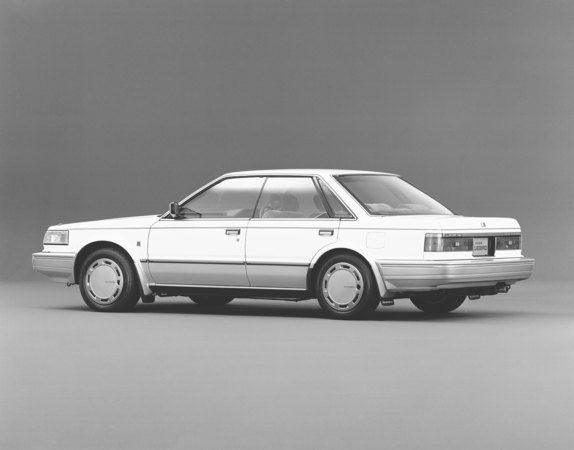



















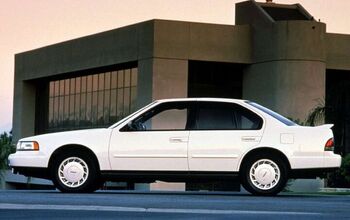
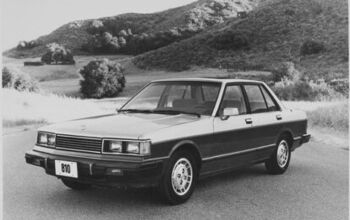
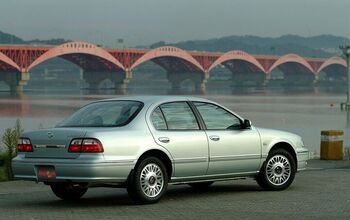
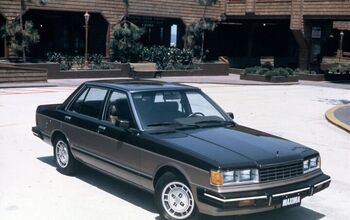
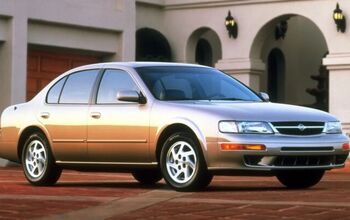










Comments
Join the conversation
What seemed to get left out of the dimensions is that the 910 chassis Maxima was longer in length and wheelbase than (4cyl) 910 Bluebirds, so the U11 Maxima was actually shorter in length and wheelbase than 910 Maximas, and I think it really shows, especially in the length of the hood.
Kinda too bad nobody's saved these. There are still a fair number of X70 Cressidas around, but I can't remember the last time I saw a U11, let alone a 910.
My first car was a "4DSC" Maxima. I remember it was such an incredibly ugly cashmere color. Buttons all over the interior. The back door windows had the 4DSE decals.
My parents bought it right off the dealership showroom floor. The following year they bought a convertible z28 Camaro and I got to keep the Maxima but only IF I could make the monthly payment which was $193. Being a 16 year old kid working a minimum wage part time job did not earn enough $$$ for gas, insurance and car payment. I struggled the whole time paying off the car. I got a second job at a ranch using a friends identity info. I got a paper route and tossed papers out the sunroof of this car for a few years.
I'll tell ya, regarding the paper route money: There wasn't a more ruthless paper boy collecting money on his paper route at the end of the month than me.